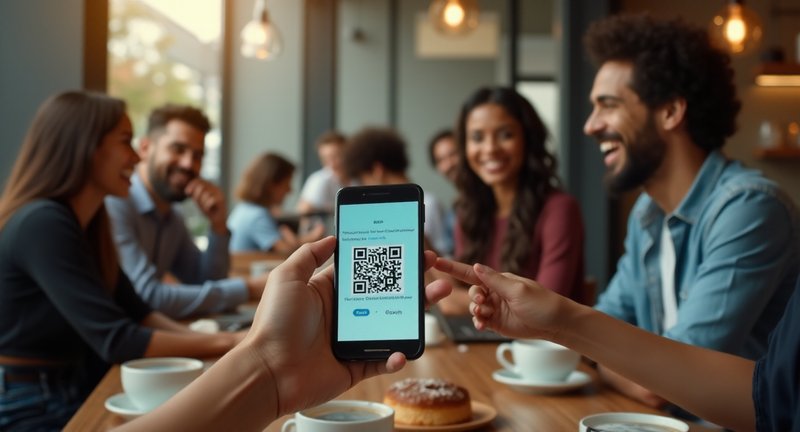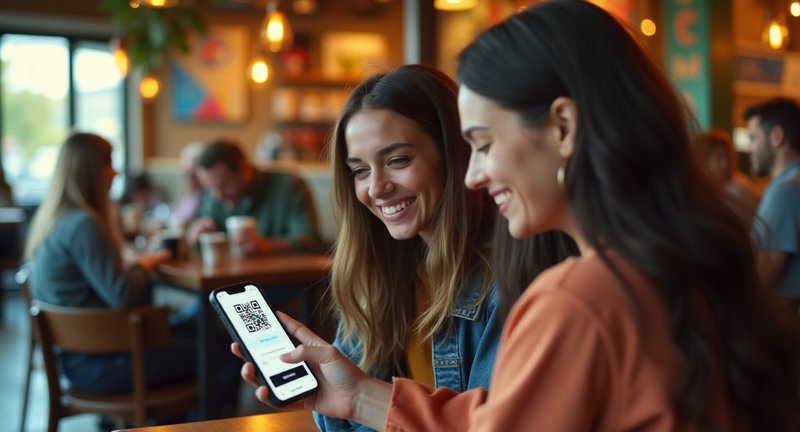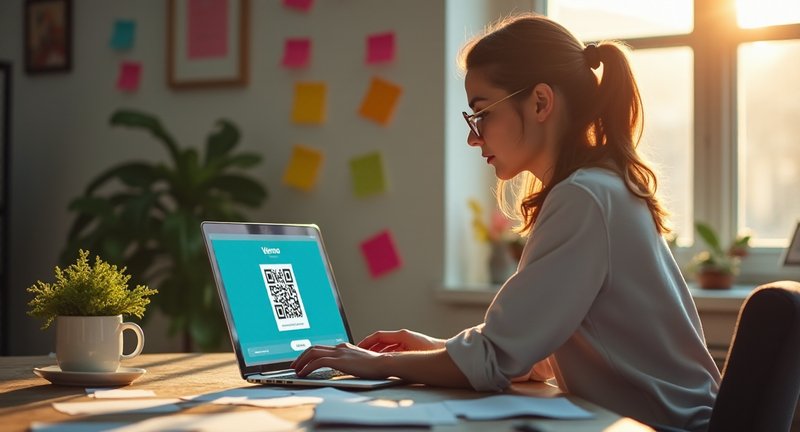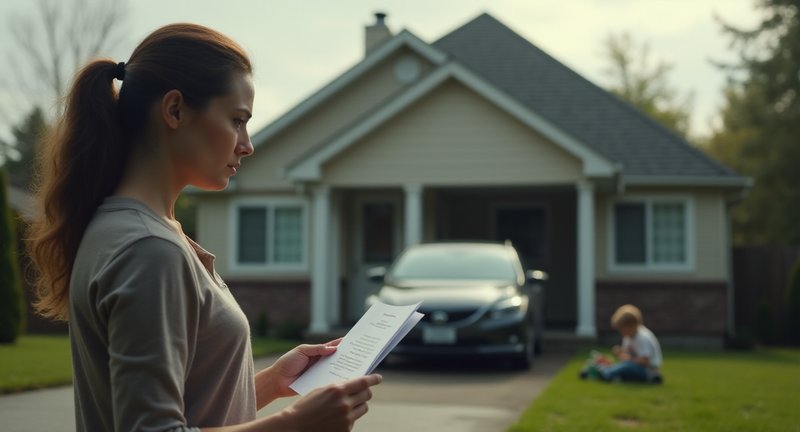A First Look at Venmo Qr Code Generator
If you’ve ever used Venmo, you know how easy it makes splitting bills or sending money to a friend. But there’s a tool that many are still sleeping on the Venmo QR Code Generator. This handy feature is like your personal shortcut to quicker, cleaner transactions. Whether you’re selling homemade candles, splitting a restaurant bill, or even managing a charity event, having your own Venmo QR code makes the whole process smoother.
So, how does this QR magic work? Let me break it down:
- No Typing Needed: Forget entering phone numbers or usernames your unique code handles it all. The buyer just scans and pays.
- Instant Recognition: You don’t have to worry about payment mix-ups. The code links directly to your account, reducing any chance of sending money to the wrong person.
- Customizable: You can easily download your QR code and plaster it on business cards, flyers, or even your website.
What really sold me was the convenience in everyday scenarios. Say, I’m at a local market selling some handmade crafts. Rather than asking people to type out my Venmo handle, I simply show them my QR code. It’s seamless. No awkward fumbling with usernames, no misspellings just a quick scan, and the payment is through.

The Venmo code creator is especially useful for small business owners and freelancers. Imagine you’re at a networking event or trade fair. Instead of exchanging business cards with the hope they’ll follow up, you can secure payments on the spot.
Give it a try. You might find it’s the simple upgrade your side hustle’s been needing.
The Convenience of VENMO QR CODE GENERATOR
I remember the first time I stumbled upon this digital gem, and it felt like discovering a hidden treasure. Imagine this: you’re at a pop-up event, with a crowd buzzing around, and instead of awkwardly waiting for someone to find their wallet, they just whip out their phone, scan, and boom – transaction complete. It’s that effortless.
These little squares of magic have made life ridiculously simple for businesses, too. Whether you’re running a coffee shop or selling art at a gallery, having this handy tool lets you streamline payments without breaking a sweat. No more ‘Did you bring cash?’ moments, just a seamless tap and go.
Now, think about the personal convenience. Picture sending someone a birthday gift or paying your share for dinner – all it takes is one quick scan. Suddenly, splitting the check doesn’t feel like a tedious math problem anymore.

The beauty here lies in the flexibility. You can use it anywhere, anytime, with just your phone. It’s like having your own portable payment assistant that never needs a day off. And the best part? You don’t need to be a tech genius to use it. Trust me, if I can navigate it, anyone can.
I’ve seen it create this instant connection between people, whether it’s during a casual exchange or a big sale. It adds a sense of ease that feels almost futuristic, yet so accessible in the present.
Introduction to QR Code Payment Systems
In my journey through the world of finance, I’ve encountered various payment systems, but QR code payment systems hold a special place in my heart. These clever little squares have revolutionized the way we transact, adding a layer of simplicity that feels almost magical.
Picture this: you’re at a bustling cafe, enjoying your favorite brew, and when the bill arrives, you simply scan a QR code instead of fumbling with cash or cards. It’s like waving a wand and making the transaction disappear in a blink! This seamless experience eliminates the hassle, allowing you to focus on what truly matters sipping that delicious coffee.
From my perspective, QR code payments are not just about convenience; they’re a gateway to embracing a cashless future. The technology is user-friendly and accessible, making it an attractive option for everyone, from tech-savvy millennials to the less digitally inclined.
Moreover, the security aspect cannot be overlooked. With encrypted transactions, QR codes add an extra layer of protection. I’ve felt a sense of relief knowing that my financial information is secure while enjoying the benefits of modern payment systems.
As I’ve delved deeper into this payment revolution, I’ve seen businesses thriving by adopting QR codes. They engage customers in innovative ways and foster loyalty through easy payment methods. This technology isn’t just a trend; it’s shaping the future of commerce.
So, if you haven’t explored QR code payment systems yet, consider giving them a try. Who knows? You might just find yourself enchanted by the ease and efficiency they bring to your financial interactions.
Benefits of Using QR Codes for Venmo Transactions
Let’s talk about the surprising benefits of using QR codes for Venmo transactions. If you’re not already using them, you’re missing out on something that’s both convenient and a bit fun, too. From personal experience, I can tell you these little codes offer more than just the novelty of cashless payments.
First of all, QR codes eliminate the need to manually enter usernames or phone numbers. This means fewer chances of sending money to the wrong person (we’ve all been there, right?). Instead, you just scan and go. It’s an absolute time-saver, especially when you’re in a hurry.
Here are a few more perks that make QR codes a great option:
- Instantaneous Payments: QR codes make transactions faster. In seconds, you’re done. No fumbling around for details.
- Better Security: Since you’re not manually entering info, it reduces human error and chances of fraud. The QR code carries all the details safely.
- Touchless Convenience: Whether you’re splitting the dinner bill or paying a vendor at a market, QR codes offer a quick, touchless payment method perfect in today’s hygiene-conscious world.
- Universal Usability: You don’t need to be tech-savvy. Even my tech-challenged friends find QR codes easy to use. Just scan, confirm, and pay.
The bottom line? It’s fast, it’s secure, and it’s foolproof. Trust me, once you start using QR codes for your Venmo transactions, you’ll wonder how you ever managed without them.
What You Need Before Generating a QR Code
Before diving into the world of QR codes, it’s crucial to have a clear understanding of what you need. From my experience, starting with a well-defined objective makes all the difference.
First off, identify the purpose of your QR code. Whether you want to streamline payments, direct customers to a promotional page, or share contact details, knowing the end goal will guide the design and functionality of your QR code.
Next, ensure you have accurate and relevant information. A QR code is only as good as the data it links to. Double-check URLs, payment details, or contact information to avoid any mishaps.
Additionally, consider the design elements. While QR codes are typically utilitarian, incorporating your brand’s colors or logo can make them more engaging. Just make sure the code remains scannable too much flair can sometimes hinder functionality.
And don’t forget about testing. Before you roll out your QR code to the masses, test it across different devices and scanning apps. I’ve learned the hard way that what works on one phone might not work on another.
In short, preparation is key. Having a clear purpose, accurate information, thoughtful design, and thorough testing will ensure your QR code works seamlessly and effectively.
Step 1: Setting Up Your Venmo Account
Setting up your Venmo account is your golden ticket to the digital payment realm, and it’s easier than you might think. First things first, download the Venmo app from your go-to app store. The user interface practically walks you through the process, but here’s where you can take the reins.
Once you’ve launched the app, you’ll need to create a login. You can either use your email or link your account to Facebook trust me, it’s all about what’s most convenient for you. Personally, I went the email route for that little extra control.
Next up is verification. Venmo wants to know you’re real, so they’ll ask for details like your phone number and bank account. It’s a bit like setting the foundation of your financial house choose wisely because this is where your future transactions will flow in and out. I like to double-check at this step, just to make sure everything is in order.
Before you can send or receive money, linking your bank or card is essential. It’s a smooth process, though. Simply enter your card details or log in through your bank’s portal, and you’re all set. Venmo ensures security, so no need to stress.
As a matter of fact, you might want to personalize your profile a bit. Add a fun profile picture or username that your friends can recognize because, let’s face it, your handle says a lot about you in the digital world.
Step 2: Accessing the QR Code Feature in the Venmo App
Step 2 is where things get exciting! Let’s dive into accessing the QR code feature in the Venmo app it’s much easier than you might think. From my own experience, this little tool can make your transactions smoother than ever.
First, you’ll want to open the Venmo app on your phone. Once you’re in, tap the menu button (it’s those three horizontal lines, usually in the upper corner). From there, things get interesting.
-
Find Your Personal QR Code: Scroll down a bit, and you’ll see an option called “Scan Code.” This is where the magic happens. Once you tap it, you’ll not only be able to scan other people’s codes, but you’ll also get access to the Venmo QR Code Generator. This will create a unique code tied to your Venmo account, making payments super easy for anyone who has your code.
-
Share Your QR Code: You can save your code as an image, which comes in handy when you need to send it to a friend or display it for a business transaction. A quick tap on the share icon, and voila your Venmo QR code is ready to spread the love.
-
Using It: Whether you’re splitting a bill at a restaurant or collecting money for a group gift, having your QR code ready makes everything faster. You don’t even need to type in usernames anymore just scan and go!
There’s something so satisfying about whipping out your phone, and with one scan, the transaction is done. It’s the small wins, right?
VENMO QR CODE GENERATOR: A Comprehensive Insight
You know, when I first stumbled across QR codes for payment options, it felt like the world was catching up with the future. Let me tell you, integrating payment systems into QR codes has genuinely changed the game for businesses, especially small ones.
These handy codes simplify life for both sides business owners and customers. It’s like giving your clients a no-brainer way to complete transactions without juggling apps or digging for cash. You simply share the QR code, and boom, the payment process is as smooth as your morning coffee.
Now, why should you even consider using a personalized payment code? Well, for starters:
- Faster transactions: No more typing in usernames or email addresses. Customers just scan and pay.
- Branding opportunities: Customize your code with logos or colors that represent your business.
- Contactless: In the age of “no-touch,” this is a win-win, both health- and convenience-wise.
As I see it, one of the overlooked perks of using these codes is the level of control they offer. You can print them out on flyers, display them on your website, or even slap one on your store window for after-hours payments. It’s incredibly flexible!

Another cool thing? Tracking. You can monitor incoming payments easily, keeping things nice and organized. And for small business owners like myself, that’s a godsend.
It’s more than just “tech for tech’s sake” this is a tool that can seriously streamline your finances while making life a bit easier for your customers.
Step 3: How to Find the QR Code Generator
Alright, let’s talk about getting yourself set up with a QR code. If you’ve made it to step 3, you’re probably wondering how to find a QR code generator. Trust me, it’s not as complicated as it sounds. The trick is knowing where to look, and I’ve got your back on that.
Here’s how you can find a QR code generator:
-
Go straight to the app. Most payment platforms or financial apps have their own built-in option. Just head to your profile or settings, and there’s usually a QR code option ready for you. It’s pretty intuitive, but make sure you dig around the menu options if you don’t spot it immediately.
-
Check the support page. A lot of times, there’s a detailed FAQ section or help guide. You’d be surprised how many features are hidden in plain sight, and their support pages break it down in a way that’s easy to follow.
-
Use a trusted third-party generator. Sometimes, if you’re looking for something a little more customizable or accessible from any device, you might want to check out reputable third-party sites. Just make sure you’re using one that’s secure and widely trusted – no one likes sketchy links when money’s involved!
Quick checklist:
- Navigate through the app’s settings.
- Search the help or support section.
- Consider a reliable external option for more flexibility.
You see, I’ve been in situations where I needed something quick and easy, and these steps saved me some headache. So, take a deep breath. You’ve got this. It’s simpler than it sounds, and soon, you’ll have that QR code in your hands, ready to share.
Step 4: Generating Your Personal QR Code
Now, let’s get to the fun part – creating your very own QR code. It sounds complicated, but trust me, it’s easier than finding your phone in the morning after it’s been on silent. The beauty of this step is how streamlined it is once you know where to look.
Start by choosing the platform or app you’re using. From there, the option to whip up your personal code should be fairly obvious, usually tucked away in a section dedicated to payment settings or profile details. This tiny piece of digital art will be your ticket to quick transactions.
Once you’ve located the QR code feature, all it takes is a click, and voila, your personal code is born. It feels like a magic trick, but really, it’s just good design. And now, this little square will act as your cash register, ready to handle all your payments.
The best part? You can share this code in seconds. Save it as an image, text it to someone, or even make it your phone wallpaper (just kidding… unless). It’s your call. You’re in charge of how you want to distribute it.
But don’t just stop at creating it know that this QR code is now part of your financial toolkit. From splitting dinner bills to collecting side hustle payments, it’s a game-changer. You’ll wonder how you ever got by without it.
Step 5: Customizing Your Venmo QR Code
Now, here comes the fun part customizing your Venmo QR code! You’ve got the basics, but why stop at ordinary? Give your QR code a bit of flair that screams ‘this is uniquely me.’
First off, think colors. You don’t want a dull black-and-white box that fades into the background. Pick something that reflects your vibe. Whether it’s bold neon or a calming pastel, the right color can set the tone for how you want to be remembered.
Next up, slap on an image. Yes, that’s right this isn’t just any plain QR code. Add your logo, a quirky icon, or even a fun photo. You’re not just creating a code, you’re making a statement.
As a matter of fact, adjust the shape. Square is standard, but who said you need to be standard? Play with rounded corners or abstract shapes to really stand out. When your QR code is part of your personal brand, every pixel counts.
So, next time you’re whipping up one of these little digital wonders, don’t just settle for functional. Get creative, have a little fun, and make sure it’s as unique as your Venmo experience.
Step 6: Saving and Sharing Your QR Code
Alright, now that you’ve got your personalized QR code ready to roll, it’s time to save and share it like a pro. Trust me, this is where things get really practical. First off, let’s make sure you’ve saved your code in a secure spot. Whether you’re on a phone or computer, save it in multiple formats PNG for easy sharing and a PDF if you want to print it for offline use. I usually like having a digital copy stashed in my cloud storage so it’s always on hand.
Next up, sharing your QR code. Here’s where you get to flex a little convenience muscle. Imagine you’re at a networking event, or simply splitting a lunch bill you don’t want to be fumbling for this. You’ll want it ready to send through text, email, or your social media.
Some quick tips:
- Phone Contacts: Snap a screenshot and have it handy in your photo library.
- Emails: Attach it as a PDF or image super easy.
- Social Media: Post it in your bio or directly in messages. Instagram, Facebook, or even LinkedIn can work, depending on who you’re sharing it with.
Pro tip: If you’re handing out physical prints, make sure the QR code size is large enough to scan effortlessly but not overwhelming on a card or flyer. I usually go for something about 1×1 inch, but test it before going wild with the print shop.
Once you’re comfortable with saving and sharing, you’ll be able to make transactions flow smoother than ever. No more awkward pauses just scan, pay, and go about your day!
Step 7: How to Use Your QR Code for Payments
Using a QR code for payments can feel like stepping into the future, don’t you think? It’s a slick, efficient way to handle transactions that saves time and keeps things smooth.
When I first started using QR codes, I was amazed at how quickly I could send or receive money. Just a simple scan with a smartphone transforms the tedious process of exchanging cash or card details into a seamless experience.
The beauty of QR codes is their versatility. Whether you’re at a bustling market or enjoying a quiet coffee with a friend, all you need is the code. No need to fumble with change or worry about forgetting your wallet at home.
To set up your payment system, it’s as easy as pie. Generate your unique code through a trusted app, then display it proudly wherever you conduct business. I’ve found that printing it out and placing it on my counter has made transactions effortless.
Now, here’s a little tip from my journey: encourage your customers to embrace this technology. Some might be hesitant, but once they see how quickly it works, their skepticism fades away.
In moments of rush, this method shines brightest. Picture yourself in a busy cafe; a quick scan allows customers to pay and be on their way in seconds. That’s convenience at its finest!
So, if you haven’t jumped on the QR code bandwagon yet, I highly recommend giving it a shot. It’s not just a trend; it’s a powerful tool that can enhance your payment process and keep your cash flow flowing.
Step 8: Receiving Money via QR Code
You’ve probably noticed QR codes popping up everywhere, and trust me, they’re one of the easiest ways to get paid. If you’re like me, convenience is king, and QR codes let you skip the tedious back-and-forth of asking for email addresses or phone numbers. With just a quick scan, the money starts flowing.
To get rolling, here’s what I suggest:
- Create your unique code: Most payment apps today give you the option to generate a personalized QR code for receiving money. You’ll find this in the settings or payment section.
- Display it: Once you have your code, show it off! Print it, save it to your phone, or even slap it on your business cards. Customers can scan your code instantly to send payments.
- Ensure a smooth experience: Sometimes, the smallest details make a difference. I recommend testing the code before sharing it with others, just to avoid any surprises. You wouldn’t want your first customer standing there, phone in hand, while your code fails, right?
Pro tip: use QR codes in unexpected ways. I’ve seen them used on digital invoices, websites, and even posters. It’s an effortless tool to integrate into your business flow, especially for in-person transactions or casual freelancing gigs.
The whole point is to make it easy for customers to send you money without thinking twice, and QR codes do exactly that. After setting it up, it feels like the future of payments has finally arrived. Get on board!
Step 9: Troubleshooting Common QR Code Issues
I’ve been there – you’re all set to use your QR code for payments, and it just doesn’t work. Frustrating, right? Let’s tackle some common QR code glitches together, so you don’t end up tearing your hair out.
First off, blurry images are a huge culprit. If your QR code isn’t clear enough for a phone camera to pick up, you’re stuck. Make sure the image resolution is high and clean. And, hey, if you’ve printed it, double-check that it hasn’t been distorted during printing.
Another frequent headache: size matters. Tiny QR codes are hard to scan, and if it’s too big, some devices struggle. Aim for a size that’s neither microscopic nor billboard-level.
Then there’s lighting issues. It sounds simple, but I can’t tell you how many times poor lighting makes a perfectly good QR code unreadable. Whether it’s the reflection off a glossy screen or a poorly lit paper, keep your code in well-lit, non-glossy environments.
Next, consider contrast problems. If your QR code blends into its background, it’s doomed. Black on white works best – avoid putting dark codes on dark backgrounds or light codes on light surfaces.
As a matter of fact, outdated QR readers can throw a wrench in your plans. If someone’s using an older app to scan your code, it might not recognize it properly. Suggesting they update their app or try a different scanner can save the day.
To wrap up, the key is simple: clear image, good size, decent lighting, and contrast. That way, your QR code is always good to go.
Need Help? Here’s More
How do I create a QR code for Venmo?
To create a QR code for Venmo, first open the Venmo app on your mobile device. Tap on the ‘Pay or Request’ button, which typically looks like a pencil and paper icon. Then, select the QR code icon located next to the payment field. Your unique QR code will be displayed on the screen. You can share this code with others, allowing them to scan it to send you money directly without needing to enter your username or phone number.
How much does Venmo charge for QR code?
Venmo does not charge a fee specifically for using QR codes. However, it’s important to note that while sending money to friends and family is free when funded by a linked bank account or balance, a fee of 3% applies when using a credit card. This means that while generating and sharing your QR code is free, the transaction fees will depend on the payment method used when someone sends you money via your QR code.
How to make Venmo QR code stickers?
To make Venmo QR code stickers, start by generating your QR code within the Venmo app. Once you have the QR code displayed, take a screenshot of it. You can then use a printing service or a sticker-making app to print your QR code on adhesive paper. Ensure the QR code is large enough for scanning and consider adding a call to action, such as “Scan to pay me on Venmo!” to encourage others to use it.
Can you send a Venmo QR code to someone?
Yes, you can send your Venmo QR code to someone. To do this, generate your QR code in the Venmo app, and then take a screenshot or save the image. You can then share this image via text, email, or social media. When the recipient scans your QR code, they’ll be able to send you money directly without needing to know your Venmo username or phone number, making it a convenient payment method.
Can I print out my Venmo QR code?
Yes, you can print out your Venmo QR code. After generating your QR code within the Venmo app, take a screenshot or save the image to your device. From there, you can print it using your home printer or take it to a professional printing service. Ensure that the printed QR code is clear and large enough for easy scanning to facilitate smooth transactions when others try to pay you.
How do I give someone my Venmo info?
To give someone your Venmo information, you can either share your Venmo username or send them your QR code. Your username can be found on your profile page within the app. If you prefer to share your QR code, generate it in the app and take a screenshot to send via text or email. Additionally, you can provide your registered phone number or email address associated with your Venmo account, making it easy for them to locate you in the app.
How do I avoid fees on Venmo?
To avoid fees on Venmo, use a linked bank account or your Venmo balance when sending or receiving money. Transactions funded by debit cards or bank transfers are free, while credit card transactions incur a 3% fee. If you need to transfer funds from Venmo to your bank account, opt for the standard transfer option, which is free but takes 1-3 business days, rather than the instant transfer option, which incurs a fee.
How much does Venmo charge for $100?
Venmo does not charge a fee for sending or receiving $100 if you use your Venmo balance or a linked bank account. However, if you use a credit card to send $100, there will be a 3% fee, which amounts to $3, bringing the total charge to $103. Always ensure you’re using a payment method that avoids fees to maximize your transactions on Venmo.
Why did Venmo charge me $10?
If Venmo charged you $10, it could be due to a few reasons. Common causes include using a credit card to send money, which incurs a 3% fee on the transaction amount. Additionally, you might have selected the instant transfer option to move funds to your bank account, which has a fee based on the transaction amount. Checking your transaction history in the app can provide clarity on any specific fees charged.











Your comment was recorded and is awaiting moderation.